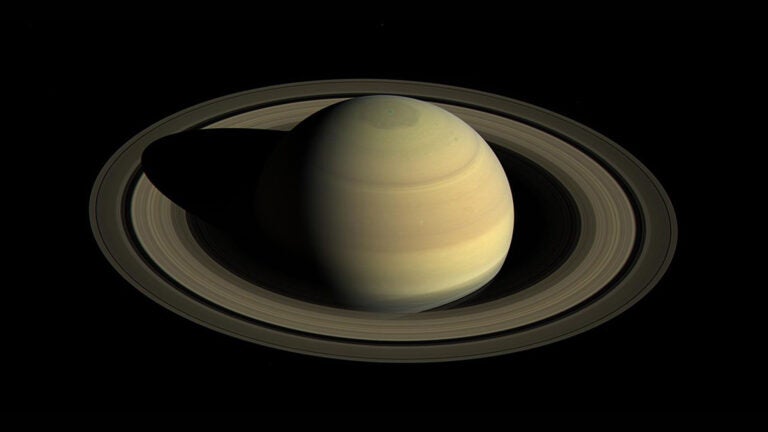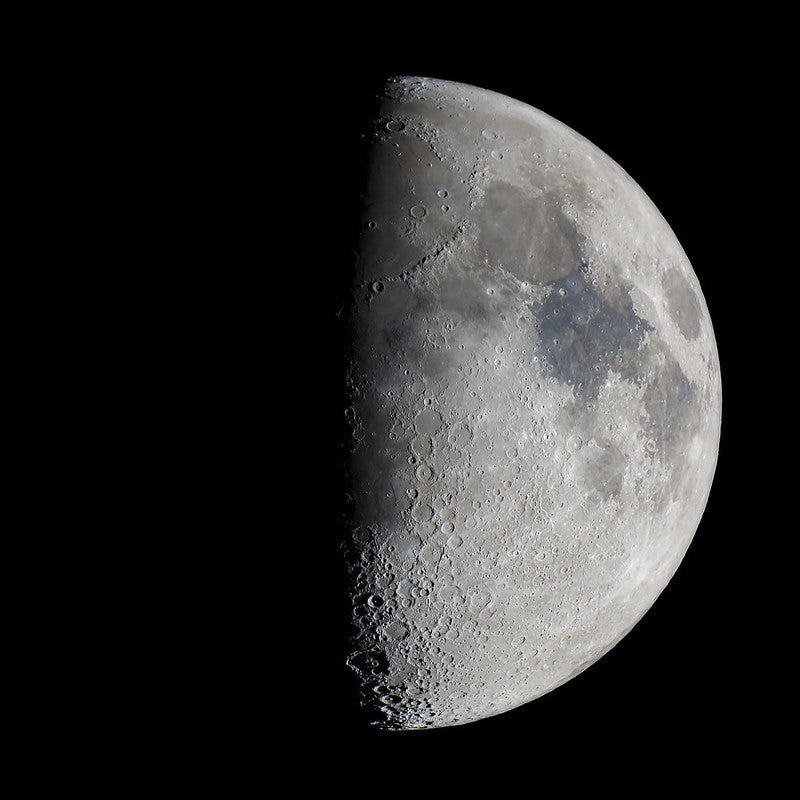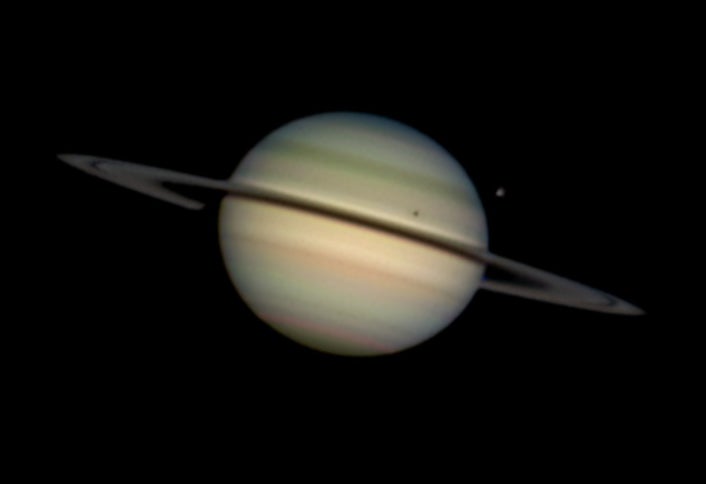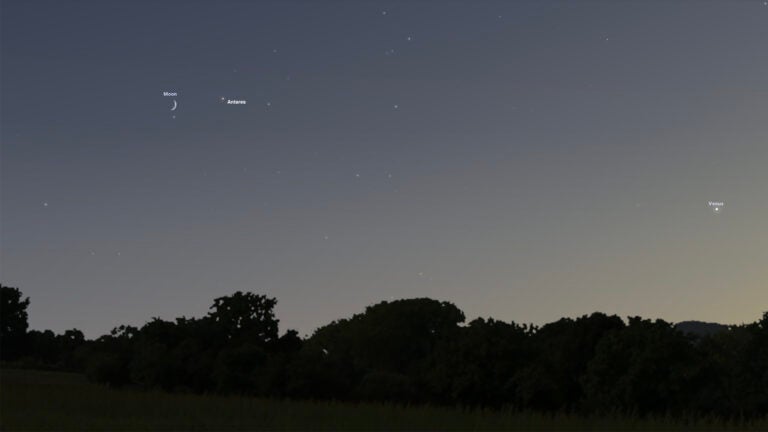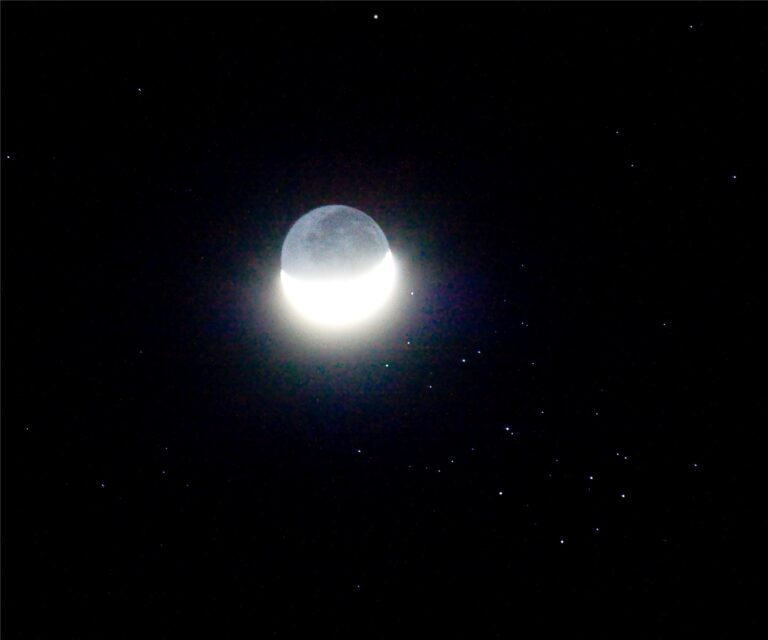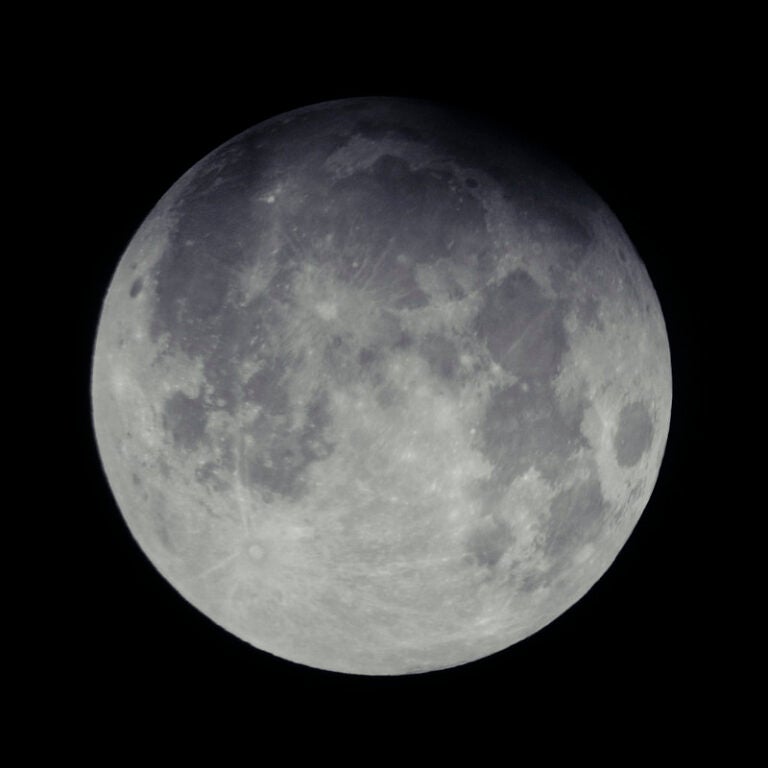This motion is believed to have resulted from a warm, low-density region of the lunar mantle below the dark patch of lunar mare called Oceanus Procellarum. The same heat source that caused the volcanic mare to form also warmed the mantle. This is the first physical evidence that the Moon underwent such a dramatic change in orientation and implies that the ice on the Moon is billions of years old.
The new findings help explain the earliest dynamical and thermal history of the Moon and shed light on the origin of lunar water.
“We found that the polar shift required to explain the distribution of ice matches perfectly with the existence of a fossilized mantle plume below the lunar mare,” said Siegler. “So, the same thing that caused the dark lavas that make up the face of the Man on the Moon also caused the axis of the Moon to move — and it is recorded in the polar ice.”
“This ice distribution tells us the near side of the Moon shifted towards the north pole — so the Man on the Moon is sort of turning his nose up at Earth. This gives us a way to model exactly where the ice should be, which tells us about its origin and where astronauts might find a drink on future missions to the Moon.”
A physical change of the lunar spin axis, known as true polar wander, can only result from a large change in the mass distribution of the Moon. According to models by James Keane from the University of Arizona, this change was provided by a large warm region of the near-side lunar mantle, which still exists, controls the current orientation of the Moon, and the face we see from Earth.
This also provides an explanation for a longstanding mystery of the odd distribution of lunar hydrogen that has been painstakingly mapped by Richard Miller of the University of Alabama in Huntsville. Compared to similar temperature environments on the planet Mercury, the Moon has far less ice. As this polar migration occurred, ice formerly hidden from the Sun in shadowed craters near the lunar poles would have moved into sunlight and boiled away.
The Moon may have once had much more ice near its poles, and the ice we see today is the tiny portion that has survived this polar migration. Large amounts of ice could have been brought to the Moon by comets and icy asteroids early in the Moon’s history or potentially outgassed from the lunar maria themselves. Figuring out the origin of this ancient lunar water might also help scientists understand how water was delivered to the early Earth.



